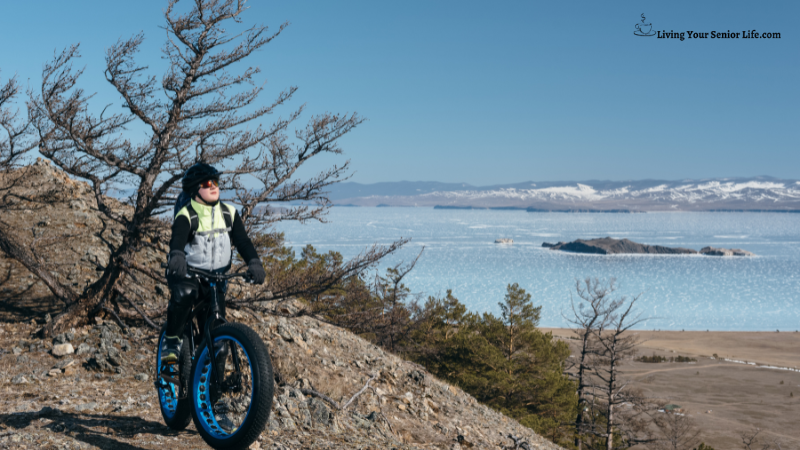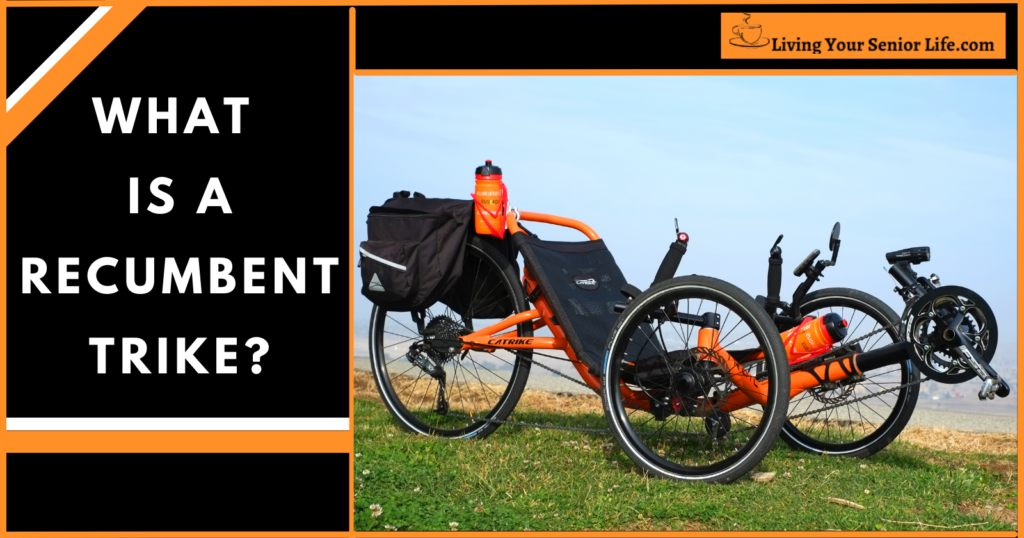If you’re curious about fat tire bikes, you’ve come to the right place. In this blog post, Fat Tire Bikes – Beginners’ Guide, we explore everything you need to know about fat tire bikes, from their history to the different types available on the market today.
We’ll also cover the best ways to choose the perfect fat tire bike for you and provide FAQs about fat tire bikes so that you can have all the information you need before making your purchase.
Finally, our final section will discuss wheel size, tires, frames, and suspension. So make sure to check out this blog to learn all you need about fat tire bikes!
Key Takeaways:
- Fat tire bikes are designed to handle rough terrain and offer a unique riding experience.
- This beginner’s guide will provide you with all the information you need to get started.
- Understanding the history, benefits, types, and components of fat tire bikes is crucial before choosing the right bike for you.
If you’re looking for a new adventure, you may want to consider trying out a fat tire bike. These bikes are designed to handle rough terrain and offer a unique riding experience. If you’re new to fat tire bikes, this beginner’s guide will provide you with all the information you need to get started.
What Is A Fat Tire Bike?
Fat tire bikes, also known as fat bikes, are a type of bicycle that have oversized tires. These tires are typically 3.7 inches or wider and are designed to be ridden on soft, unstable terrain such as snow, sand, and mud. Originally, the purpose of fat tire bikes was for use in Alaska during the winter months, but have since become popular for use in a variety of conditions.
When compared to regular mountain bikes, fat tire bikes have several key differences. The most obvious difference is the size of the tires. The larger tires on fat tire bikes provide more surface area, which allows the bike to float over soft terrain such as snow and sand. Additionally, the tires on fat tire bikes are typically run at lower pressures, which helps to absorb shocks and provide a smoother ride.
There are several types of fat tire bikes available on the market today. Some are designed for use in extreme conditions such as deep snow or sand, while others are designed for use on less challenging terrain. When choosing a fat tire bike, it’s important to consider the type of riding you’ll be doing and the conditions you’ll be riding in.
Overall, fat tire bikes are a great choice for anyone looking to explore new terrain or simply enjoy a smoother ride on their regular bike routes. Whether you’re looking to ride on snow, sand, or mud, a fat tire bike is sure to provide a fun and exciting experience.
Since the tires have a greater area that comes into contact with the ground at any given instant, they provide more traction and stability, allowing you to go over snow, sand, and other terrains.
Video: Fat Tire Bikes – Beginner’s Guide
History of Fat Tire Bikes
Fat tire bikes have been around for quite some time, but they weren’t always as popular as they are today. Contemporary fat tire bikes were developed in the 1980s by a group of Alaskan cyclists who were looking for a way to ride their bikes on snow-covered trails. These early fat tire bikes had wide tires that were designed to float on top of the snow, providing better traction and stability than traditional mountain bikes.
In 1999, two designers emerged and met to discuss their work at the Interbike Show. Shortly after, in 2001, frame designer Mark Gronewald, who hailed from Alaska, started referring to his bikes as “Fat Bikes.” A decade later, Gronewald added a bike to his production with a full range of gears. Surly Bikes, established in Bloomington, Minnesota, went on to produce their specialized frame in 2005 that was called The Pugsley. It was with The Pugsley that fat tire bikes were made available to the general public.
Over time, fat tires became more popular among those who participated in mountain biking, discovering that the wide tires provided better grip and control on loose terrain such as sand, mud, and gravel. The bikes also became popular among urban commuters, who appreciated the comfort and stability of the wide tires on rough city streets.
Today, fat tire bikes are used for a wide range of activities, from mountain biking and trail riding to commuting and touring. They are available in a variety of styles, from full-suspension mountain bikes to rigid urban commuters, and are designed to handle a wide range of terrain and riding conditions.
What Are The Benefits of Fat Tire Bikes?
Fat tire bikes offer many benefits that make them a great choice for cycling enthusiasts. Here are some of the benefits of fat tire bikes that you should know:
Comfort
Fat tire bikes are designed to provide a comfortable ride. The wide tires absorb shock and vibrations from the road, making your ride smoother and more comfortable. This is especially important when cycling on rough terrain or bumpy roads.
Stability and Traction
One of the most significant benefits of fat tire bikes is their stability and traction. The wide tires provide more surface area, which translates to better grip on the road. This makes them perfect for off-road cycling, including snow, sand, bogs, mud, and pavement. You can ride with more confidence and control, even on unstable terrain.
Versatility
Fat tire bikes are versatile and can be used for a variety of activities, including commuting, mountain biking, and even winter biking. They are also great for exploring new terrains and going on adventures.
Fun and Adventure
Fat tire bikes offer a fun and adventurous way to cycle. They are perfect for exploring new trails and terrains, and you can take them on any adventure you want. With fat tire bikes, you can experience the thrill of cycling in a whole new way.
Confidence
With a fat tire bike, you can ride with more confidence. The stable and comfortable ride gives you the confidence to tackle any terrain, and the wide tires provide better traction and grip, giving you more control over your bike. This makes fat tire bikes a great choice for beginners and experienced cyclists alike.
In summary, fat tire bikes offer many benefits that make them a great choice for cycling enthusiasts. They provide a comfortable and stable ride, better traction and grip, versatility, and the opportunity for fun and adventure. With a fat tire bike, you can ride with confidence and explore new terrains in a whole new way.
Types Of Fat Tire Bikes

When it comes to fat tire bikes, there are several different types to choose from. Each type has its own unique features and characteristics that make it suitable for different types of riding. Here are some of the most common types of fat tire bikes:
Regular Fat Tire
- A typical Fat Tire Bike has some things in common with a traditional bike; it has two wheels, handlebars, and pedals. The significant difference is found in the size of the tires – it has much wider tires allowing for use on multiple types of terrain.
Hardtail Fat Bikes
Hardtail fat bikes are the most basic type of fat tire bike. They have a rigid frame and fork, which means they don’t have any suspension. This makes them lighter and more efficient than other types of fat bikes, but also less comfortable to ride on rough terrain. Hardtail fat bikes are ideal for riders who want a simple, no-frills bike for cruising around town or on easy trails.
Cargo Fat Bikes
Cargo fat bikes are designed for carrying heavy loads. They have a longer wheelbase and a sturdy frame, which makes them ideal for hauling groceries, camping gear, or other cargo. Cargo fat bikes are ideal for riders who want a practical and versatile bike for running errands or touring.
Electric Fat Bikes (e-bikes)
Electric fat bikes are similar to regular fat bikes, but they have an electric motor that provides pedal assistance. Having an electric motor makes them ideal for riders who want to cover more ground or tackle more challenging terrain without getting too tired. Electric fat bikes are more expensive than regular fat bikes, but they’re also more versatile.
Full-suspension fat bikes have both front and rear suspension, which makes them more comfortable to ride on rough terrain. They’re also heavier and more expensive than hardtail fat bikes. Full-suspension fat bikes are ideal for riders who want to tackle more challenging trails and terrain.
Snow Bikes
Snow bikes are designed specifically for riding in snow and ice. They have wider and larger tires than regular fat bikes, which provides more traction and stability in slippery conditions. Snow bikes are ideal for riders who want to enjoy the winter sport and explore snowy trails and terrain during the winter months.
Folding
- A folding fat tire bike is usually smaller than the typical non-folding model. Folding allows for easier storage and transport.
Key Components of Fat Tire Bikes
Fat tire bikes have some unique components that set them apart from traditional bikes. In this section, we’ll take a closer look at some of the key components of fat tire bikes and what you should consider when choosing a bike.
Brakes
Fat tire bikes require powerful brakes to stop the extra weight and momentum of the wider tires. Hydraulic disc brakes are the most common type of brake found on fat tire bikes, as they provide excellent stopping power and are low maintenance. Mechanical disc brakes are also a good option, but they require more maintenance than hydraulic brakes.
Frame
Fat tire bike frames can be made from a variety of materials, including aluminum, carbon, and steel. Aluminum frames are lightweight and affordable, while carbon frames are even lighter but more expensive. Steel frames are durable and provide a comfortable ride, but they are also heavier than aluminum or carbon. Consider your budget and riding style when choosing a frame material.
Gears
Fat tire bikes come with a variety of gear options, including single-speed, 7-speed, and 21-speed. If you’re planning on doing a lot of hill climbing, a bike with more gears will make your life easier. However, if you’re primarily riding on flat or smooth surfaces, a single-speed bike may be sufficient.
Suspension
Many fat tire bikes come equipped with suspension to help absorb shock and provide a smoother ride. Suspension can be found in the form of a suspension fork or a full suspension frame. If you plan on doing a lot of off-road riding, a suspension fork is a good investment. If you’re primarily riding on flat or smooth surfaces, a rigid fork may be sufficient.
Tires
The most noticeable feature of a fat tire bike is, of course, the fat bike tire. Fat tires are wider than traditional bike tires, typically ranging from 3.8 to 5 inches in width. The wider tires provide extra traction and stability, making them ideal for riding on sand, snow, or other soft or uneven surfaces. It’s important to choose the right tire pressure for your riding conditions – lower pressure is better for soft surfaces, while higher pressure is better for hard surfaces.
Racks and Accessories
If you plan on using your fat tire bike for commuting or touring, consider investing in racks and accessories to make your ride more comfortable and convenient. Fenders can help keep you dry in wet conditions, while lights are essential for riding at night. A dropper post can make it easier to transition between uphill and downhill riding, while pedal assist and electric motors can help you tackle longer distances or steeper climbs.
Choosing the Right Fat Tire Bike
When it comes to choosing the right fat tire bike, there are several factors to consider. The perfect fat tire bike for you will depend on your needs, preferences, and budget. Here are some tips to help you choose the right fat tire bike for you:

Determine Your Budget
Fat tire bikes can range in price from a few hundred dollars to several thousand dollars. Determine your budget beforehand so that you can narrow down your options and choose a bike that is within your price range.
Test Different Bikes
Before making a purchase, it’s important to test different fat tire bikes to find the one that feels the most comfortable and suits your riding style. Visit a bike shop and try out different models to get a feel for how they handle and ride.
With all bikes, you want to be sure to get a bike that fits your body. Make sure to choose a fat tire bike that is the right size for you. A bike that is too small or too large can be uncomfortable to ride and may even lead to injury.
The main measurement you’ll want to consider is your height. It stands to reason that taller people will be more comfortable with a taller frame, and a person that is shorter will feel more comfortable with a small frame. Your height, torso length, inseam, and arm length are some of the body measurements you’d want to take. Most manufacturers will give you a suggested bike size based on your height.
Weight Consideration
When it comes to fat tire bikes, weight and speed are important factors to consider. While these bikes are known for their ability to handle rough terrain and provide a comfortable ride, they are often heavier than traditional mountain bikes. This added weight can make them slower and less efficient, especially on flat or paved surfaces.
If you’re looking to ride your fat tire bike on more challenging terrain, such as sand or snow, then weight may not be as much of a concern. However, if you plan on using your bike for commuting or riding on smoother surfaces, then a lighter frame and components will be more beneficial.
Speed Consideration
In addition to weight, speed is another consideration to keep in mind. Fat tire bikes are not typically designed for speed, as their wider tires create more rolling resistance. This means that they may not be the best choice for racing or high-speed riding.
That being said, there are still ways to increase the speed and efficiency of your fat tire bike. One option is to invest in lighter components, such as a carbon fiber frame or wheels. Another option is to choose a tire with a lower rolling resistance, although this may sacrifice some of the bike’s off-road capabilities.
Look for Quality Components
When choosing a fat tire bike, look for quality components such as brakes, gears, and suspension. These components can greatly affect the bike’s performance and durability.
Accessories
Accessories can enhance your fat tire biking experience. Here are some accessories that you may find useful:
- Bikepacking bags: If you plan to go on long rides or overnight trips, bikepacking bags can be a great addition to your bike. They allow you to carry your gear on your bike, making it easier to travel long distances.
- Fenders: Fat tire bikes can kick up a lot of dirt and mud. Fenders can help keep you and your bike clean.
- Lights: If you plan to ride your bike at night, lights are essential. They help you see where you are going and make you more visible to other drivers.
By following these tips, you can choose the perfect fat tire bike for your needs and preferences. Remember to take your time and do your research to ensure that you make the right choice.
Riding a Fat Tire Bike
Fat tire biking can be a thrilling experience for beginners. These bikes are designed to be ridden on all types of terrain, including snow, sand, and mud. With their wide tires, fat bikes offer greater stability and traction, making them well-suited for riding in challenging conditions.
When riding a fat tire bike, it’s important to keep in mind that the riding experience may be different from what you’re used to. The wide tires may take some getting used to, and you may feel a bit wobbly at first. However, with practice, you’ll soon get the hang of it.
One of the challenges of fat tire biking is uphill riding. While fat bikes are designed to handle all types of terrain, riding uphill on a fat bike can be a bit more challenging than on a regular bike. The wide tires can make it harder to maintain speed, and you may find yourself having to put in more effort to get up steep hills.
To ensure your safety while riding a fat tire bike, it’s important to wear a helmet at all times. A good helmet will help protect your head in case of a fall or accident. Additionally, it’s important to be aware of your surroundings and to ride at a safe speed. Fat bikes are built for stability, but accidents can still happen if you’re not careful.
Fat Tire Bikes and Different Terrains
When it comes to fat tire bikes, their unique design makes them perfect for tackling a wide range of terrains. Unlike traditional bikes, which are limited to smooth roads and well-maintained trails, fat tire bikes can handle rough terrain, snow, sand, and even mud. In this section, we’ll take a closer look at how fat tire bikes perform on different terrains.
Snow and Ice
One of the main advantages of fat tire bikes is their ability to ride on snowy and icy terrain. The large, wide tires provide excellent traction and stability, making it easy to ride on snow and ice without slipping or sliding. If you’re planning on riding in snowy or icy conditions, be sure to lower the tire pressure to increase the surface area of the tire in contact with the ground.
Sand
Fat tire bikes are also great for riding on sandy terrain, such as beaches or desert dunes. The wide tires help to distribute your weight evenly, preventing you from sinking into the sand. However, riding on sand can be challenging, so it’s important to maintain a steady pace and keep your weight centered over the bike.
Mud
If you’re planning on riding on muddy terrain, fat tire bikes are an excellent choice. The wide tires help to prevent mud from clogging up the treads, providing excellent traction and stability. However, riding on muddy terrain can be challenging, so it’s important to maintain a steady pace and avoid sudden movements.
Wet Conditions
Fat tire bikes are also great for riding in wet conditions, such as after a rainstorm. The large tires provide excellent traction on wet surfaces, helping you to maintain control and stability. However, it’s important to be cautious when riding in wet conditions, as the roads or trails may be slippery.
Maintenance
To keep your fat tire bike in top condition, regular maintenance is essential. Here are some tips to help you keep your bike running smoothly:
- Keep your bike clean: Dirt and grime can cause damage to your bike’s components. Regular cleaning will help prevent this. Use a soft brush or sponge and mild soap to clean your bike. Avoid using high-pressure water as it can damage the bearings.
- Lubricate your bike: Lubrication helps prevent rust and keeps your bike running smoothly. Apply lubricant to the chain, derailleur, and other moving parts. Use a lubricant that is specifically designed for bikes.
- Check your tire pressure: Fat tire bikes require much lower tire pressure than regular bikes. Check your tire pressure regularly to ensure that your tires are properly inflated.
- Check your brakes: Make sure that your brakes are working properly. Adjust them if necessary. Replace brake pads if they are worn out.
- Check your suspension: If your bike has suspension, check it regularly. Make sure that it is working properly and adjust it if necessary.
FAQs
Are Fat Tires Faster Than Traditional Bicycles?
Generally, fat tire bikes are slower than conventional bicycles. The bike’s frame configuration and geometry make it difficult to go as fast as a regular bike. However, there are exceptions to this rule – some fat tire bikes can be quite speedy!
What are some tips for riding a fat tire bike as a beginner?
If you are new to riding a fat tire bike, there are some tips that can help you get started. First, start with easy terrain and gradually work your way up to more challenging trails. Second, make sure you have the right gear, including a helmet, gloves, and appropriate clothing. Third, adjust your bike’s tire pressure to suit the terrain you will be riding on. Fourth, practice proper body positioning, including keeping your weight centered over the bike and your eyes focused on the trail.
How do I determine the appropriate size for my fat tire bike?
Choosing the right size for your fat tire bike is important for your comfort and safety while riding. The size of your bike will depend on your height and inseam. To determine the appropriate size, you can use a bike size chart or consult with a professional at a bike shop. You should also consider the bike’s standover height, which is the distance between the ground and the top tube of the bike frame.
Additional Reading
You May Also Be Interested In: 5 Best Recumbent Exercise Bikes
Final Words
In conclusion, fat tire bikes are a great option for those who enjoy off-road cycling, snow biking, and beach cruising. They provide better flotation on soft surfaces like snow and sand, making them ideal for winter sports enthusiasts. They also offer a more comfortable ride due to their wider tires, which absorb shock and provide better traction.
When choosing a fat tire bike, it is important to consider your height, budget, and the type of terrain you will be riding on. The frame material can also vary, with steel, aluminum, and carbon fiber being the most common options.
Overall, fat tire bikes are a versatile and fun option for anyone looking to explore off-road terrain. With the right bike and equipment, you can enjoy a comfortable and exciting ride in any season.
What are your thoughts about fat tire bikes? Please comment below.










